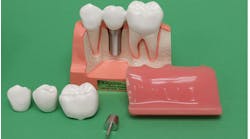The leitmotif of my career is that success depends on an office’s ability to build positive relationships. Put another way, a physician mentor I greatly respect advises me that affability, availability, and aptitude, in that order, are the keystones of professional triumph.
An excellent way to enhance relationships is to show personal respect and professional proficiency by not making people wait. Being on time results in happier patients, and this decreased tension benefits everyone in the office. Reducing stress is a sufficient reward, but gratified individuals are also more likely to show up on time, meet their financial obligations, and enthusiastically refer.
The problem with running behind
However, remaining on schedule is difficult, and anyone who has been in private practice for more than a week has probably run behind.
Some doctors handle being late with aplomb. Most of my physicians, for example, don’t seem to care how long they keep me waiting. But I’m not one of these doctors, and I’d suggest you not be either, or this can become your norm.
You may also be interested in ... For increased production, create a short-call list
Getting behind may result from a late patient, trouble with a mandibular block, or breaking off a root tip. Perhaps it occurs after attempting to treat a patient whose oral cavity is a saliva fountain, has muscular, four-inch-thick cheeks, a tongue like an anteater, and a hair-trigger gag reflex. (Need I mention they’re highly apprehensive … as are you?) Unfortunately, such scenarios are unavoidable. But running late is sometimes due to our mistakes, such as a chairside assistant not realizing a patient has arrived or inefficiently breaking down and setting up a room. These and similar areas can be improved, but let’s consider a difficulty we can virtually eradicate: inaccurate scheduling.
The solution
I discovered the solution to this problem during a Chicago Midwinter meeting some 40 years ago, and the corrective is simplicity itself. All that’s required is a handful of 3 x 5 cards, a pencil, and a stopwatch. We labeled a card for each procedure I performed, such as anterior, premolar, and molar endo or crowns, each step of the removable prosthetic process, etc. We always allow 10 minutes to administer anesthesia and schedule restorative on a minute-per-surface basis. For example, we allocate six minutes per surface for composites, and four fillings comprising eight surfaces are allotted 48 minutes (6 x 8), although we always round up because life is short.
Our first timed procedure was a one-step root canal on tooth no. 8. Fresh out of the military, where only one-hour blocks existed, I’d scheduled 60 minutes for anterior endo. After anesthesia, we started timing as I commenced my access prep and stopped when my endo fill was complete, but before placing a restoration. To my amazement, the time elapsed was 11 minutes. I’d been scheduling amalgam and composite for four minutes per surface, but we found composites took 50% longer. Times for dentures and partials were laughably off in both directions. If you wish to excel, perform this simple but beneficial task immediately!
We prominently display a sign in our reception area boldly stating: “We are an on-time office. Please advise any staff member if it is 10 minutes past your scheduled appointment.” I don’t believe it’s possible to always be on schedule, but if we are late, we show sincerity with a heartfelt apology, plus five car wash tokens or movie theater tickets. We also note our delay on the record and make every effort not to let it happen to this person again.
While timeliness isn’t possible without accurate scheduling, more than that is required. I’ve been an enthusiastic horticulturist since purchasing my first home in 1975, and I still grow 100% of the fruits and vegetables I consume. Any gardener can testify that plants are either growing or dying, and I contend nonflourishing dentists are also mentally, emotionally, and financially expiring. With this caveat in mind, I predispose myself and my practice toward evolution. A large part of success is a mindset, and I believe in CANI (Constant and Never-ending Improvement) in every aspect of my life. If you can do something better, why wouldn’t you?
Adequate space
But mentality can’t create space, and I’ve enjoyed five fully equipped operatories since the early years of my career. I dedicate two ops to our highly profitable expanded hygiene department consisting of our hygienist, her chairside assistant, and one front office employee, all compensated with a percentage of their production. Expanded hygiene has been around for decades, and I’ve used it for over 30 years. Yet for reasons I can’t fathom, many dentists accept a major portion of their business routinely losing money.
Two ops are for my exclusive use; the fifth is for overflow. (Suture removal, prosthetic adjustments, taking study models to save a patient an office visit, replacing a regular op rendered unusable due to equipment failure, seeing emergencies, rebonding ortho brackets, plus numerous other tasks take place in this valuable space.)
Growth is impossible without adequate square footage, and lack of space truncates many dentists’ futures. But there’s no need to create what dental philosopher Dr. Earl Estep referred to as “a monument to your ego” or to purchase expensive gadgets that don’t increase production. Nice doesn’t need to be lavish, and in my family-oriented practice, the reception area, where we greet our guests, resembles a pleasant living room with a play area.
But space is of little benefit unless skilled team members are available. Since the pandemic’s onset, staffing shortages have reached crisis levels in dentistry and virtually everywhere else. Based on 40 years of wet-gloved dentistry, I aver two truths:
- Excellent teammates are the essential ingredient in achieving an outstanding office.
- Finding and retaining terrific people has always been a challenge.
Attracting and retaining staff
Conventional methods of attracting staff are often discussed, but I’m always scouting for potential teammates. I pay particular attention to hard-working waitpersons. Though the best must take a pay cut to work with you, many tire of night and weekend employment or seek enhanced benefits. Bank employees, of whom much is expected for surprisingly modest remunerations, are also viable candidates. By constant vigilance, you can identify possible employees in numerous venues.
Once my new hire is in place, we follow a written detailed plan for each office position that lists daily training goals and identifies one person responsible for teaching that skill. I meet with every new employee at the end of each critical first day to be sure we’re achieving our goals. It’s much easier for experienced staff to do the job than help a new person learn, but this frustrates the trainee and is long-term counterproductive.
Cross-training begins immediately. If they obtain the proper certifications that satisfy state requirements, front office staff can expose dental radiographs and assist in setting up and breaking down operatories. All chairside assistants are fully computer trained to schedule or check out a patient. These abilities are priceless when sickness, vacation, and other situations render us shorthanded.
Having adequate space and staff, we invite all emergency patients to come in immediately, advising that while they might have to wait, we’ll see them today (to their great relief). We complete the medical history and take blood pressure readings upon their arrival. One staff member exposes indicated x-rays, then asks a standard set of questions to aid diagnosis (sensitive to hot, cold, percussion, etc.). They explain their findings to me as I greet the patient and wash my hands. Most of their diagnosis is correct, and I need only to elucidate the situation and approve prescriptions.
Always fully booked, we don’t offer definitive care unless there’s a change in our schedule. If time is available, we complete a firm financial arrangement before any treatment. We see multiple emergencies daily, occasionally reaching double figures. These suffering souls often have a dentist of record who can’t or won’t see them for days. This policy is a huge practice builder.
Constantly seek to improve every aspect of your life and practice. Time procedures until your scheduling is pristine. Understanding relationship building is essential to dental success, and having adequate space and an outstanding, loyal, cross-trained, and motivated staff are crucial. Once these goals are achieved, bask in your well-deserved success.
Editor's note: This article appeared in the August 2023 print edition of Dental Economics magazine. Dentists in North America are eligible for a complimentary print subscription. Sign up here.






